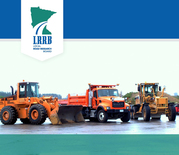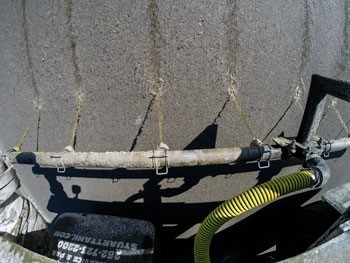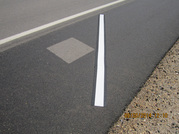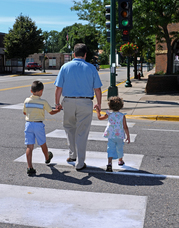|
The Minnesota Local Road Research Board, which represents Minnesota's city and county engineers, welcomes you to the first edition of its new quarterly e-newsletter. Stay up-to-date on the latest LRRB-produced research and products for local transportation practitioners.

A new guidebook compares the eight most widely used fleet management software tools in Minnesota. Costs, equipment needs, tracking features, financial analysis applications and other attributes are reviewed. Guidance is provided for interpreting the data produced from software, along with key considerations and features for agencies to consider when selecting tools, including cost, fleet size, software capabilities, customer support and work order generation.
|

The LRRB has developed a spreadsheet-based decision tool to help local agencies establish effective maintenance practices within their limited budgets as they work to preserve and install pavement markings on low-traffic roads.
|

Carver County explored the use of pickle brine as a deicer, using pickle juice from a nearby canning facility. Initial results were promising, but extensive testing and analysis revealed that each batch of pickle brine had to be the same (salinity, vinegar content, and sugar content) for the equipment to work effectively, which wasn't possible with the juice provided. Although the experiment (sponsored by the OPERA Program) was not successful, it still demonstrated the food waste product's potential as an anti-icing agent. Read more in this story.
|

Researchers examined fish passage research and consulted with experts in many fields to develop a culvert design guide for Minnesota's varied ecological regions. Minnesota Guide for Stream Connectivity and Aquatic Organism Passage Through Culverts (PDF) is intended primarily for culvert designers and hydraulic engineers who are tasked with creating highway culverts that facilitate the movement of fish and other aquatic organisms, and do not block the free flow of streams and rivers.
|

An analysis of nontraditional fog seals used by Minnesota local agencies shows that agriculture-based bioseals offer value in terms of the visibility of existing striping, pavement permeability and perhaps even pavement cracking. However, the benefits must be balanced against temporary reductions in retroreflectivity and pavement friction. Traditional fog seals obscure pavement striping and reduce friction even more and for a longer time, but also offer longer-lasting water resistance and durability. Read the full research report (PDF).
|

A new video, produced by the LRRB, helps local agencies explain why some warning signs are necessary and effective, while others are counterproductive, when responding to citizen requests for specialty warning signs.
|
 |
|
The City of Shoreview paved a neighborhood with pervious concrete to control stormwater and pollutant runoff into a nearby lake. A seven-year performance study found pervious concrete was a good fit for the lakeside neighborhood and performed well. Watch this video and read this story to learn more about the city's experience. |

LRRB-sponsored researchers are evaluating a City of St. Paul campaign to improve pedestrian safety. They are investigating whether St. Paul's educational and sustained enforcement efforts, which are based on a NHTSA-supported study, can change a city’s driving culture and improve yield rates for pedestrians and speed compliance.
Several media stores have been published. Read more about the LRRB-sponsored study.
|
Thank you for sharing your needs with us at the last State Aid Pre-Screening Board Meetings. Your research ideas were prioritized at the January city and county engineer conferences for future funding consideration by the LRRB Board. Stay tuned for an update on recently completed research projects at the spring pre-screening meetings.
The LRRB Board and the LRRB Research Implementation Committee have had several membership and staffing changes due to retirement and job changes.
|